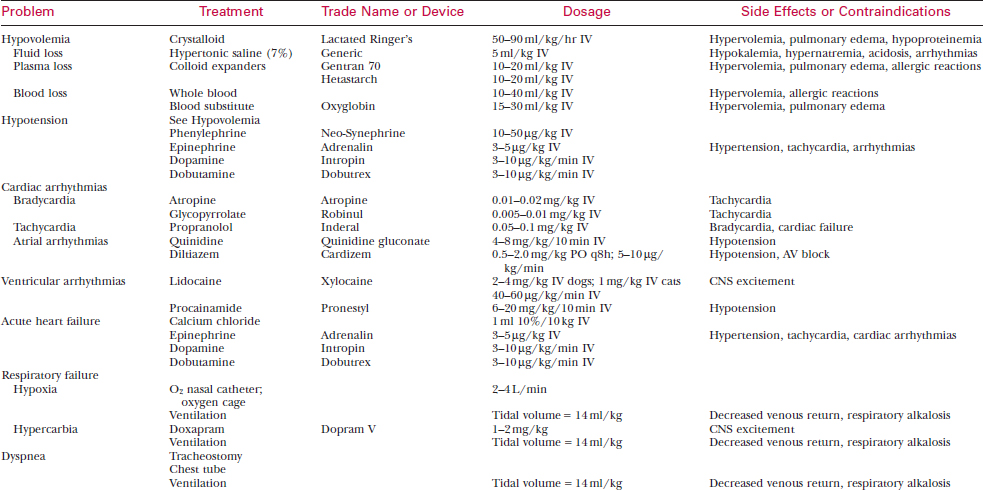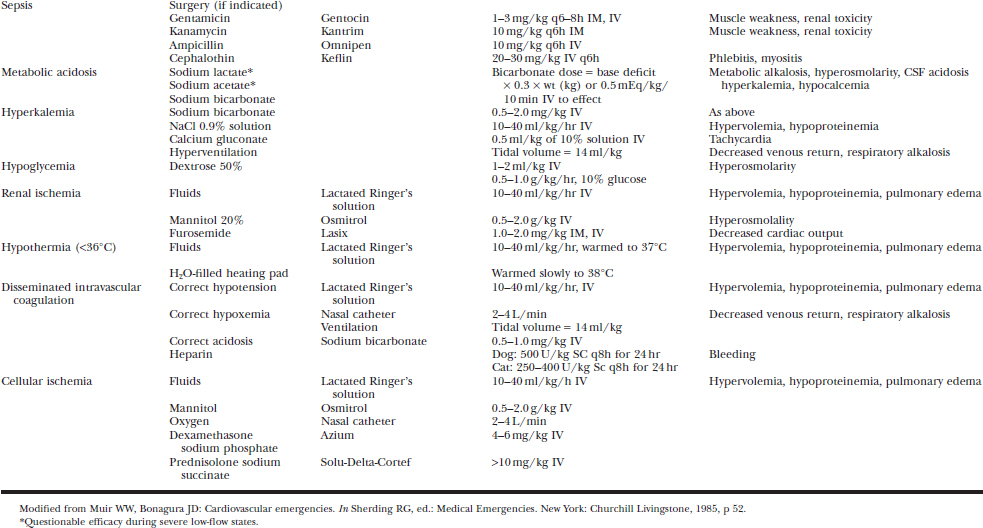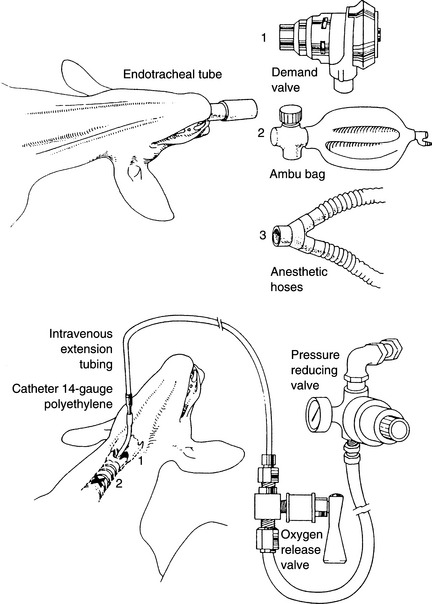Chapter 157 Cardiopulmonary Cerebral Resuscitation
Resuscitation is the restoration of life after apparent death. Cardiopulmonary resuscitation (CPR) includes therapy to restore heart and lung function to normal. Most resuscitative techniques incorporate methods to maximize and maintain cerebral blood flow and clinicians have redefined CPR as cardiopulmonary cerebral resuscitation (CPCR). Preparedness and early recognition of the signs of sudden death are the major factors that determine long-term outcome (Tables 157-1 and 157-2).
Table 157-1 SIGNS OF CARDIOPULMONARY ARREST
| Evaluations | Clinical Signs and Observations | |
|---|---|---|
| Effort, rate, and rhythm of breathing | Dyspnea (abdominal breathing) | |
| Gasps (gurgling sounds) | ||
| Tachypnea | ||
| Bradypnea | ||
| Altered patterns of breathing: | ||
| Cheyne-Stokes | ||
| Agonal | ||
| Heart rate and rhythm | Tachycardia | |
| Bradycardia | ||
| Irregular rhythm | ||
| Pulse | Peripheral arterial pulse is difficult orimpossible to palpate at systolic BPs < 40–50 mm Hg | |
| Heart sounds | Heart sounds are inaudible at BPs < 40–50 mm Hg | |
| Bleeding | Absence of bleeding | |
| Change in color of blood from red to blue during surgical procedure | ||
| Peripheral perfusion | Change in mucous membrane color: | |
| Pale or white | ||
| Blue or cyanotic—5 g/dl of reduced Hb imparts bluish discoloration to mucous membranes; anemic animals (<5 g/dlHb) do not demonstrate cyanosis | ||
| Pupils | Pupils dilate within 1–2 min after cardiac arrest | |
| Mental state | Altered consciousness | |
| Coma | ||
BPs = arterial blood pressures; Hb = hemoglobin.
Table 157-2 ESSENTIAL EQUIPMENT TO PERFORM CPCR*
CPCR is divided into three phases:
BASIC LIFE SUPPORT: AIRWAY, BREATHING, AND CIRCULATORY SUPPORT
Airway
Establishing an Airway
Tracheotomy
A tracheotomy may be necessary in animals with upper airway obstruction, brachycephalic animals, or in dogs and cats that are successfully resuscitated, regain consciousness, and object to oral-tracheal intubation. (Tracheotomy is described in Chapter 3.)






